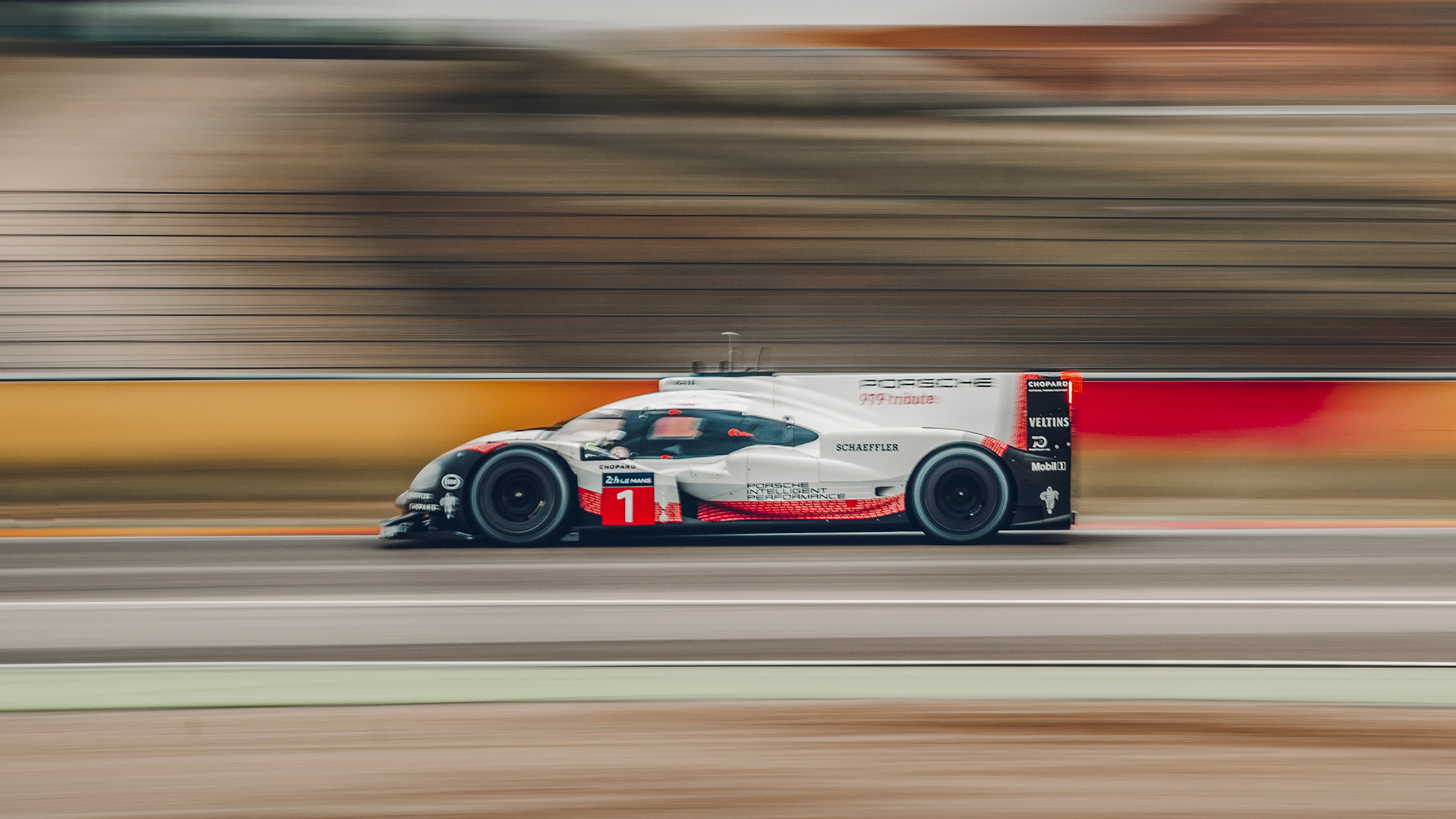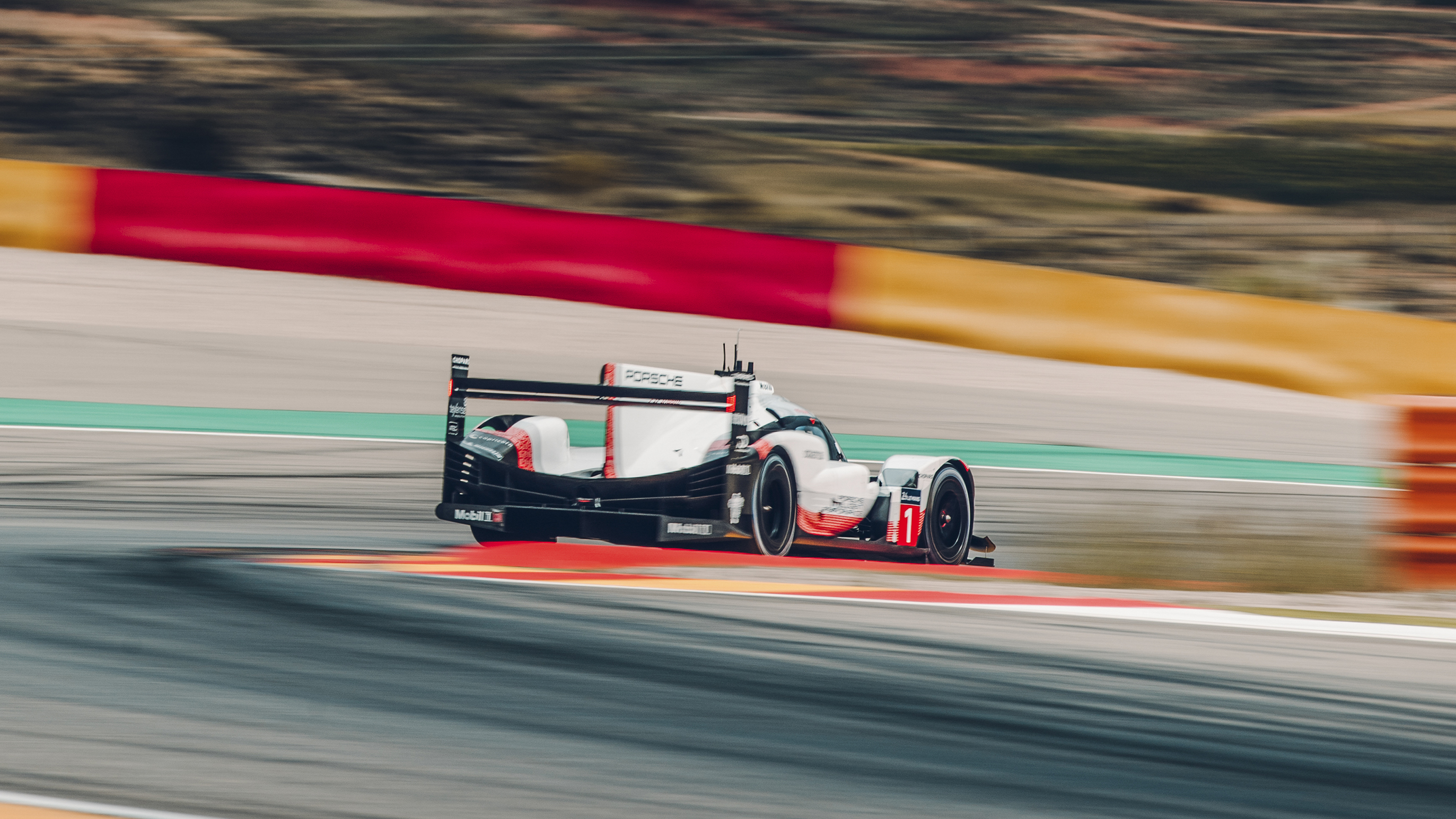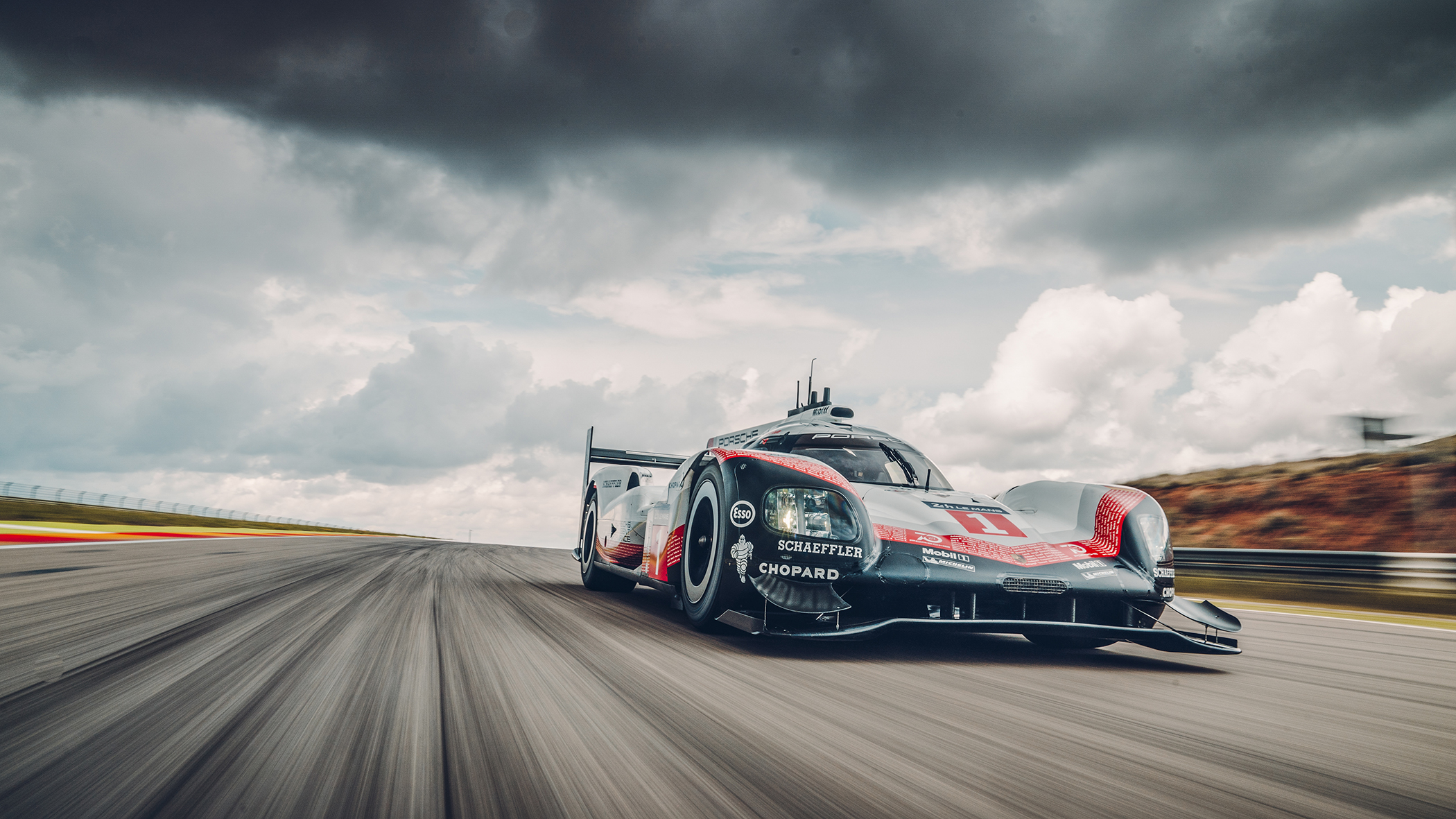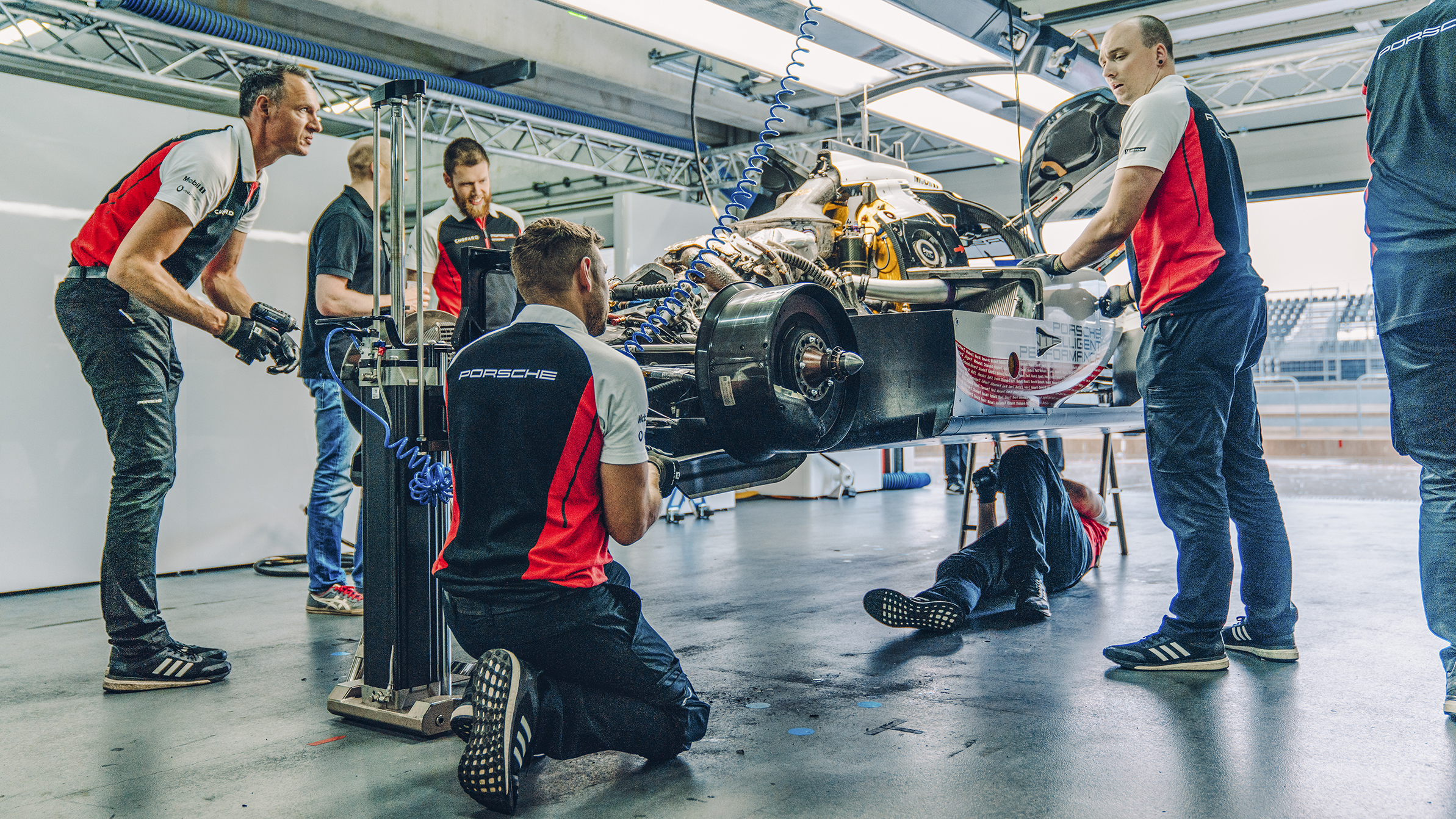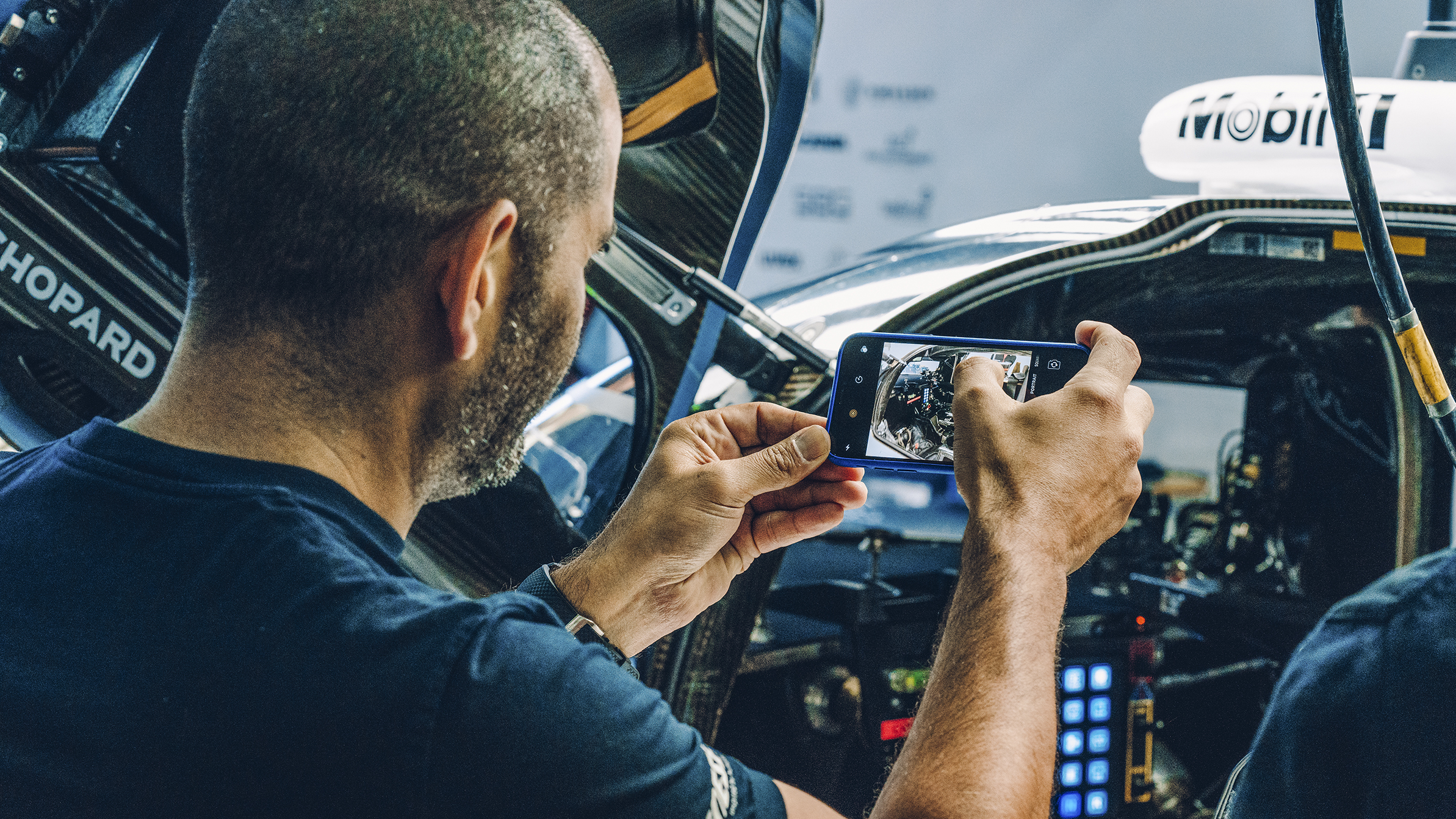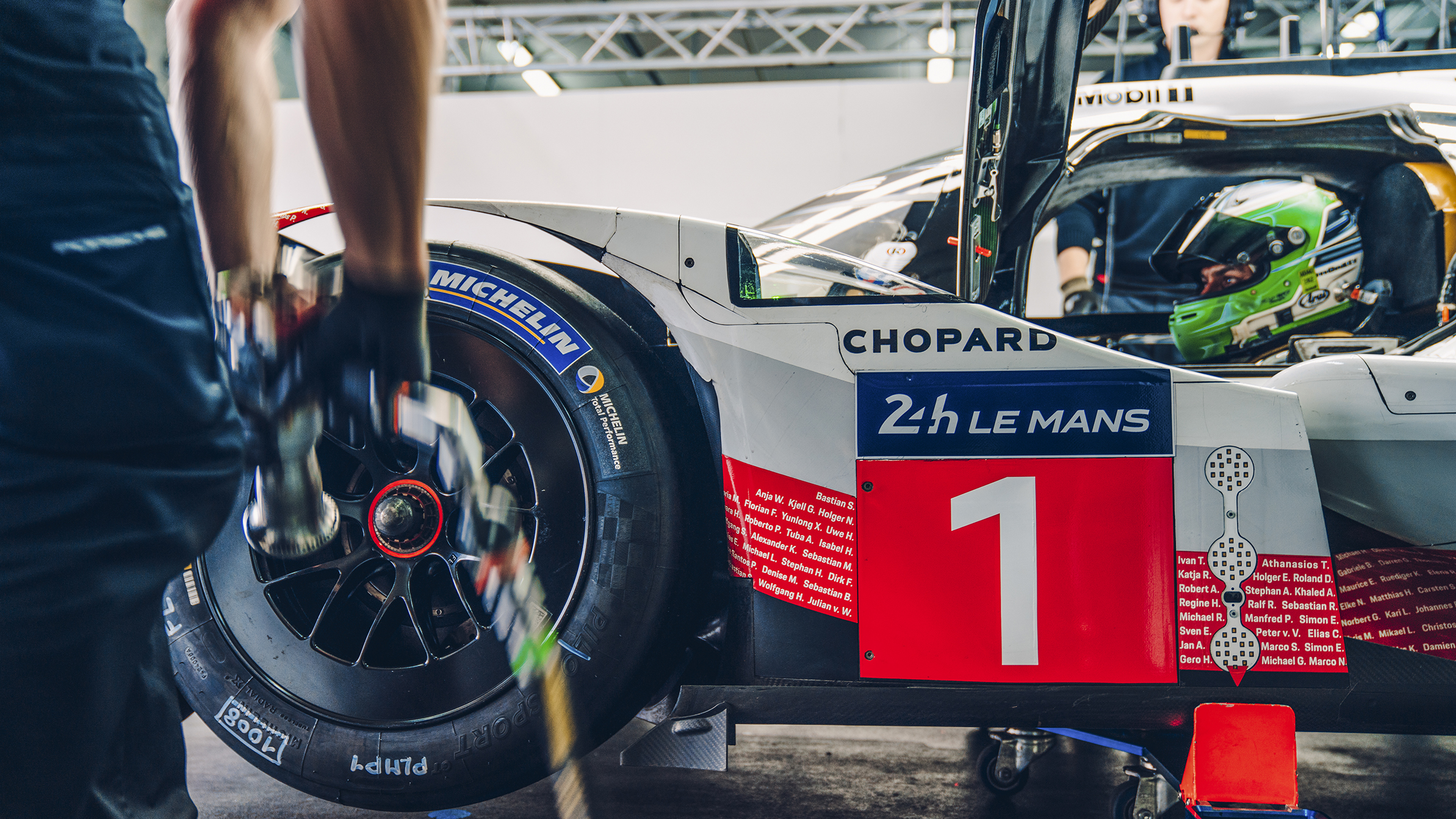
Chris Harris drives the Porsche 919 Hybrid
An upside to Porsche being out of Le Mans: they’re letting Chris drive the 919
The simulator session didn’t go well. Two laps into my virtual run around Spain’s best-kept secret, also known as Aragon race track, I felt unwell. Sickness is apparently a common problem in the world of virtual testing, and my guts gave imminent warning that I was about to blow chunks where Webber, Montoya, Bernhard and Lieb had all sat, and, come to think of it, probably chundered themselves.
Words: Chris Harris // Photography: Mark Riccioni
I have never before been invited to drive a car where a pre-test sim session was obligatory. But then, the Porsche 919 – the Le Mans-winning Porsche 919 – is arguably the most complicated motor car ever made, and that, combined with its staggering speed, probably entitles Porsche to send people like me to school for the day.
And it was some day. The steering-wheel-controls briefing lasted over an hour. The emergency lecture was worryingly lengthy too. After some barf-free laps in the mainframe, I flew back from Porsche Motorsport’s now largely empty premises daunted by what lay ahead.
Now, as you may know, Porsche canned its LMP1 programme at the end of 2017. It had achieved most of what the company wanted to win – multiple WEC titles and those Le Mans wins – but as a technology showcase, Porsche felt the 919’s potential had been smothered by regulations, so it felt that perhaps the world should see what the car was really capable of.
And that’s how 2018 became 919 tribute year, with the aim of breaking track records, public displays and having a peek under the skin of this remarkable and, until now, very secretive machine. Oh, the other part of that tribute process was inviting a few people to drive last year’s Bahrain-winning 919 racecar. That’s the bit I’m interested in.
With its bodywork removed, the 919 is catnip for the engineering enthusiast, on an unparalleled scale. The lateral thinking and packaging owes more to aeronautical skills than anything automotive I’ve seen outside of Formula One. But in terms of powertrain complexity, the 919 makes an F1 car look like a MkIII Escort.
The test drive process is simple enough: couple of sighter laps, pit, seven timed laps, pit, seven more timed laps. Then, I suspected at the time, head home with a slight dismissive view of all current hypercars. The 919 is all about procedure. The role of the driver in its performance is important, but the car is the star, and if the operator strays too far from the instruction manual, things go wrong. You enter over a high sill and wriggle down into a very small cabin. I’m a chunky 5ft 7in gnome and I barely fit.
The belts are pulled tight, and the absurdly complicated wheel sits close to your chest. There are only two pedals, the clutch is on the wheel, and a small push-button panel to your right carries sundry controls and the lights-of-doom. Put simply, the 919 is the electric eel of sports cars – mishandle it and it can kill you. Multiple safety-light panels offer either a green or red light. Green is good. Red means get out and jump clear of the machine. Unwitting earthing will result in charred remains. Gulp.
The radio is both your physical and emotional umbilical to the people and systems that allow the car to function. The race engineer calmly tells you to switch on the master switch and engage the hybrid mode. It really would be no surprise to learn that Dr Emmett Brown was conducting proceedings – the radio language of the 919 is all engage, hybrid and systems – it’s pure sci-fi for us civilians. And, of course, the 919 doesn’t just fire into life like any other car. It creeps away under pure electric power with the clutch disengaged, then, at 40mph, you fire the motor and release the clutch. At this point you are in control of a 4WD high-downforce projectile pushing 900bhp and weighing less than 900kg.
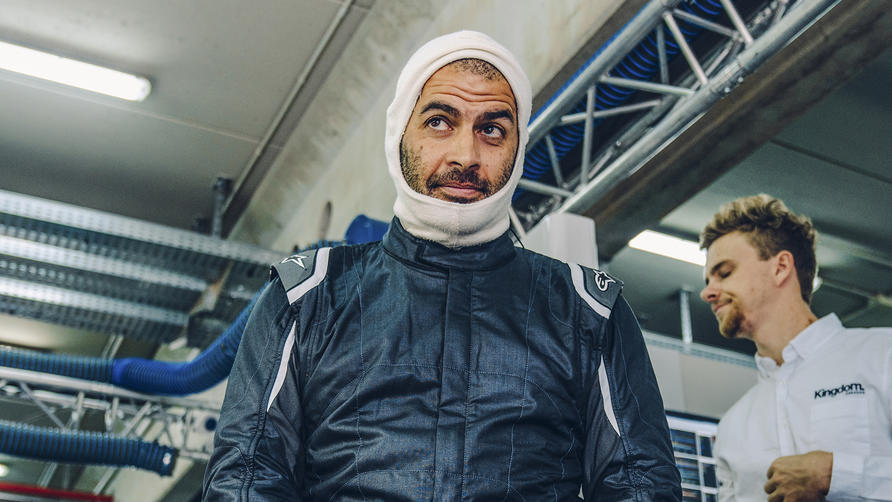
And yet the internal combustion engine in this thing is just 2.0 litres and configured as a V4. It is heavily turbocharged to produce about 500bhp and it really is physically tiny – buried against the rear bulkhead. The front axle is the single most impressive example of packaging I’ve ever seen in any vehicle. A single spring and damper sit horizontally ahead of a single electric motor that drives the front axle.
Due to a quirk of the WEC regulations, it has to run through a mechanical locking differential, rather scotching some mouth-watering torque-vectoring potential. The motor can produce up to 500bhp too. And it’s tiny – the size of a rolled-up sleeping bag. If one single component has changed my opinion of a potential electric future, it is that motor. To see its size, then hear the specification, and then eventually its effect, is quite something.
Top Gear
Newsletter
Thank you for subscribing to our newsletter. Look out for your regular round-up of news, reviews and offers in your inbox.
Get all the latest news, reviews and exclusives, direct to your inbox.
The front and rear axles are not connected, so the driver has separate traction controls for each, and the front axle disconnects completely above 150mph. Aragon is a high-speed circuit where the 919 has been tested extensively. The car is probably worth £10 million.
So I’m now rolling down the pit lane, the little V4 engine has just zinged into life and the 919 isn’t so much intimidating as a great chunk of unknown. It has traction control, but it’s not a foolproof road-style system, and the controls are strangely inert. The steering is light, the pedals the opposite – the brake needs a big shove, the throttle less so. But, as is always the case with racing cars, the 919 doesn’t really work unless you push. And that means taking yourself to new places.
Put simply, the 919 is the electric eel of sports cars – mishandle it and it can kill you
So you brake later, carry more speed into each apex and get on the gas earlier, and then the world begins to make sense – while paradoxically, suddenly becoming quite bizarre. The sense comes from tyre temperature, hot brakes, fantastic all-wheel traction; the madness comes from the computers. Because the 919 is individually programmed for each track. Engineers scour data traces to work out how best to deploy that electric boost, so it behaves differently on the exit of each corner.
Turns 3 and 4 at Aragon are, at best, fourth gear in a fast road car; in the 919 they are flat in sixth gear, pulling nearly 3g. The car explodes out of Turn 2 and then you just try to keep the flesh from peeling off your cheekbones through a fearsome right then left, until braking into Turn 6. The aerodynamic grip is insane. Right now, the 919 feels consistent in the way it delivers all that performance, then, as you exit the slow, downhill corkscrew-esque left at the back of the circuit, the 919 performs its party trick.
You’re flat-out at this point, flicking through the gears and kinking left, when the blue lights on the wheel that denote electric deployment flicker and the thing erupts down the straight. This begins at 125mph, and before you have time to react to the slam in your back, the car hits its 190mph maximum in sixth gear. The Porsche engineers quickly worked out that the best place to boost was at the beginning of long straights. And you hear the motor zing when it kicks – it serves as a whole new soundtrack of speed, adding something to underpin the surprisingly raspy and angry-sounding V4.
The brakes take some getting used to; there is no ABS, but from high speed the downforce is such that you really do smash the pedal as hard as you can. There isn’t much in the way of pedal feel, so you need the lock-up lights that warn of imminent flat-spots. But compared to any fast road car, the way this thing stops is plain violent.
That downforce dominates the high-speed handling. Through the final turn, the 919 is pulling well over 3g, even in my hands. Feeling it push itself into the deck as the speeds rise makes you grin, and there really is nothing like the knowledge that going faster will give a driver more grip.
This isn’t a car that wants to be hustled. You brake it in a straight line, clip the apex and then unwind the lock as soon as possible before lighting the afterburners. And don’t even think about letting it slide about too much – the chassis is so complicated that slip angles result in weird torque deployment that can be confusing, and a little terrifying.
I could just about complete both seven-lap stints. Each time my neck was so spent that I couldn’t drive any more. These are physical machines, and the people who drive them must be both strong and fit. And they should count themselves very lucky. I haven’t driven anything like the 919 before – partly because there is nothing out there that compares. I love that it has already broken the lap record at Spa and the Nürburgring.
But what I find most gratifying is that it continues a long tradition of Porsche race projects that prefaced the next stage of road-car technology. If the 919’s insane performance is anything to go by, cars are about to get a whole lot faster. That’s a future I can support.
Trending this week
- Car Review
BMW 1 Series
- Top Gear's Top 9
Nine dreadful bits of 'homeware' made by carmakers







